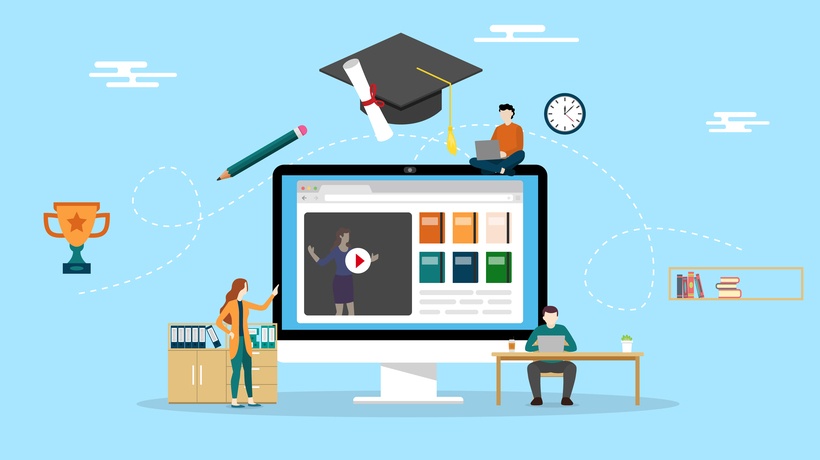Technology can significantly enhance student engagement through various means. Here are some key ways:

1. Interactive Learning Tools:-
Interactive learning tools such as Kahoot, Quizlet, and Nearpod transform traditional learning into a more dynamic and engaging experience. These platforms allow teachers to create quizzes, flashcards, and interactive lessons that students can participate in using their devices. For instance:
•Kahoot: A game-based learning platform where teachers can create multiple-choice quizzes. Students participate in real-time using their smartphones or tablets, competing against each other in a fun, game-like environment.
•Quizlet: Provides various study modes including flashcards, quizzes, and games. Students can study independently or collaborate with classmates.
•Nearpod: Allows teachers to create interactive presentations that include polls, quizzes, and open-ended questions. Students can participate using their own devices, ensuring active participation throughout the lesson.
2. Multimedia Content
Using multimedia such as videos, animations, and simulations helps to present information in more engaging and understandable ways. For example:
•Videos: Platforms like YouTube and Khan Academy offer educational videos that can simplify complex topics. Videos can include visual and auditory stimuli, making content more engaging and easier to grasp.
•Animations and Simulations: Tools like PhET Interactive Simulations provide animated simulations that help students visualize and interact with concepts in science and mathematics. This can make abstract concepts more concrete and understandable.
3. Gamification
Gamification involves incorporating game elements into educational activities to increase motivation and engagement. Elements include:
•Leaderboards: Friendly competition through leaderboards can motivate students to improve their performance.
•Challenges and Quests:Creating learning challenges or quests that students need to complete can make learning feel like an adventure.
•Points and Badges: Students earn points or badges for completing tasks, which can motivate them to engage more with the material.
4. Personalized Learning
Adaptive learning technologies use algorithms to analyze a student’s performance and adapt the content accordingly. Benefits include:
•Tailored Content: Platforms like DreamBox and Knewton provide content that adjusts to the learner’s needs, helping to keep them challenged but not frustrated.
•Pacing:Students can learn at their own pace, which helps prevent boredom from slow instruction or frustration from fast-paced lessons.
5. Collaborative Tools
Collaboration is key to engagement, and tools like Google Classroom, Microsoft Teams, and Slack facilitate this by enabling communication and cooperation among students:
•Google Classroom: Provides a platform for teachers to distribute assignments, provide feedback, and foster discussions among students.
•Microsoft Teams:Offers chat, video conferencing, and file sharing, making it easy for students to work together on projects and communicate with their teachers.
•Slack: Though primarily a business tool, Slack can be used in educational settings to create channels for different subjects or projects, facilitating collaboration and discussion.